|

Sam Benzacar of Anatech Electronics, an RF and microwave filter company, has published his February
newsletter that features his short op-ed entitled "Dynamic Spectrum Sharing
Coming Next Year," which discusses the quandary the wireless industry finds itself
in with very limited spectrum available in the millimeter-wave bands that can accommodate
high data rates necessary for 5G schemes. I like a statement made from another source
about 5G being the first wireless protocol to perform like wired connections, but
without the wires. Until more spectrum is freed up, some form of spectrum sharing
plan is needed, and service providers are working on what had been dubbed "dynamic
spectrum sharing" (an innovation claimed by Ericsson), which allows available segments
of spectrum to be accessed on an as-needed basis per agreements between owners.
I see it as the wireless network equivalent to a massive
distributed
computing system like the ones used by research groups to tap idle power of often
thousands of independent computers via Internet to effect the capacity of a single
supercomputer.
A Word from Sam Benzacar
Dynamic Spectrum Sharing Coming Next Year
 By Sam Benzacar By Sam Benzacar
As I've discussed before in this column, the wireless industry in the U.S. is
in the unfortunate position of having little available low-and mid-band spectrum
to accommodate the needs of 5G, which is why some carriers such as Verizon are aggressively
rolling out 5G at millimeter wavelengths.
Remedies to this situation in the lower frequency bands include carrier aggregation,
network slicing, reframing existing services, and frequency sharing such as used
in the AWS band and most recently with the Citizens Broadband Radio Service (CBRS).
However, another approach soon to reach the deployment stage is dynamic spectrum
sharing (DSS) that although also a form a sharing is more like frequency reuse.
DSS allows a carrier to deploy 4G LTE and 5G NR in the same band, dynamically
allocating spectral resources between the two based on the density of traffic. Right
now, to add 5G to 40 MHz of its allocated LTE (i.e., 4G) a carrier would have to
split it in half, with 20 MHz for 4G and 20 MHz for 5G. For users, this would mean
lower performance than today because the available bandwidth would be reduced. Using
DSS, the carrier can automatically overlay 5G and 4G traffic, allowing both to access
the entre 40 MHz, depending on traffic density. As it can be accomplished with software
upgrades, DSS is a nice addition to the current approaches for squeezing more from
nearly saturated bands.
While wireless carriers can deploy immediately when the technology is ready,
probably later this year, the smartphone launch cycle is early in the year for Samsung
and in the fall for Apple. So, don't expect to see DSS available this year for end-users,
but more likely by Samsung and other Androids phones this time next year.
 Apple Again Taking a Whack
at Antenna Design Apple Again Taking a Whack
at Antenna Design
Apple has apparently not been happy with Qualcomm's QTM 525 millimeter-wave front-end
module because it doesn't allow the company to keep its phones thin, so it may build
its own. This may or not be what Apple finally chooses to do because doesn't have
best track record in antenna design, of which "Antennagate" is the most infamous
example. In that case, when the user held the iPhone 4, he or she connected to the
antenna, reducing performance. This time, the company's challenge will be a lot
more difficult, as phased-array antennas at millimeter wavelengths make those on
the iPhone 4 seem simple.
 Ericsson Set 5G Speed Record Ericsson Set 5G Speed Record
With eight carriers aggregating 800 MHz of millimeter wave spectrum, Ericsson
has achieved a downstream data of 4.3 Gb/s, the fastest to date. The company's Street
Macro 6701 achieved this using a 5G smartphone form factor test device powered by
the Qualcomm Snapdragon X55 5G modem. The commercial solution including network
and terminal support will be available this year.
 NASCAR Signed VERIZON NASCAR Signed VERIZON
NASCAR has signed a three-year deal with Verizon in which the carrier will provide
12 NASCAR-owned racetracks with better access to high-speed service with the goal
of eliminating dead spots and delivering higher speeds. This makes Verizon the official
wireless and 5G partner for the stock car racing series and the Wi-Fi partner at
the 12 tracks, which host 19 of the 36 Cup Series races.
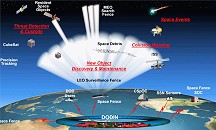 Air Force to Light Up Next-Gen
Space Fence Air Force to Light Up Next-Gen
Space Fence
The U.S. Space Force will turn on the next generation of its "Space Fence" on
Kwajalein Atoll in the Pacific that lets DoD tracks thousands of objects up to 22,000
miles from Earth. It will track space junk, keep track of enemy satellites, and
help prevent satellites from colliding with each other. NASA thinks there are at
least 500,000 such objects measuring 0.4 and 4 inches circling the Earth at 22,000
miles an hour. The new version is designed to detect objects as small as 4 inches
from low-Earth orbit (900 to 1,200 miles) as well as medium-Earth orbit (1,200 to
22,000 miles), and geosynchronous orbit (22,000 miles and beyond).
Getting Ready for 5G:
Anatech Electronics introduce New Ka band 30.5 GHz Waveguide Band Pass Filter.
Featuring a center frequency of 30.5 GHz, a bandwidth of 1000 MHz, an Insertion
Loss 1 dB Max, and a Power Handling is 20 watts.
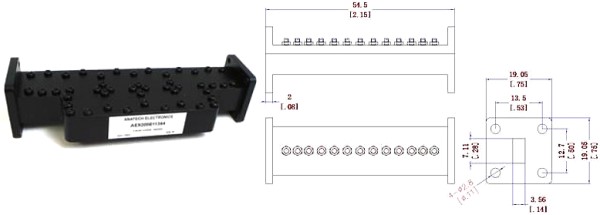
Anatech Electronics Introduces a New Line of Suspended Stripline and
Waveguide Type RF Filters
Check out Our Filter Products
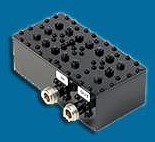
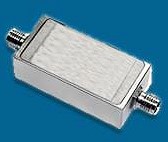
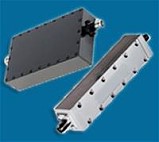
Cavity Band Pass Filters
LC Band Pass Filters Cavity Bandstop/Notch Filter
About Anatech Electronics
Anatech Electronics, Inc. (AEI) specializes in the design and manufacture of
standard and custom RF and microwave filters and other passive components and subsystems
employed in commercial, industrial, and aerospace and applications. Products are
available from an operating frequency range of 10 kHz to 30 GHz and include cavity,
ceramic, crystal, LC, and surface acoustic wave (SAW), as well as power combiners/dividers,
duplexers and diplexers, directional couplers, terminations, attenuators, circulators,
EMI filters, and lightning arrestors. The company's custom products and capabilities
are available at www.anatechelectronics.com.
Contact:
Anatech Electronics, Inc. 70 Outwater Lane Garfield, NJ 07026 (973)
772-4242
sales@anatechelectronics.com
Posted February 19, 2020
|





























 By Sam Benzacar
By Sam Benzacar Apple Again Taking a Whack
at Antenna Design
Apple Again Taking a Whack
at Antenna Design  Ericsson Set 5G Speed Record
Ericsson Set 5G Speed Record
 NASCAR Signed VERIZON
NASCAR Signed VERIZON
 Air Force to Light Up Next-Gen
Space Fence
Air Force to Light Up Next-Gen
Space Fence 





